The healthcare industry is always looking to adopt new technologies, and it looks like that trend is getting just a little bit stronger as more robots are brought into hospitals around the world!
Although these hospital-based robots might not look as sleek as the humanoids being developed in all of your favorite science fiction movies, they will immediately improve patient care and hospital operations.
Other industries, such as the food service industry and the hospitality industry, have already started adopting service robots and it looks like the trend is beginning to affect hospitals as well!
Let’s explore and learn how hospitals are benefiting from Servi Service Robots.
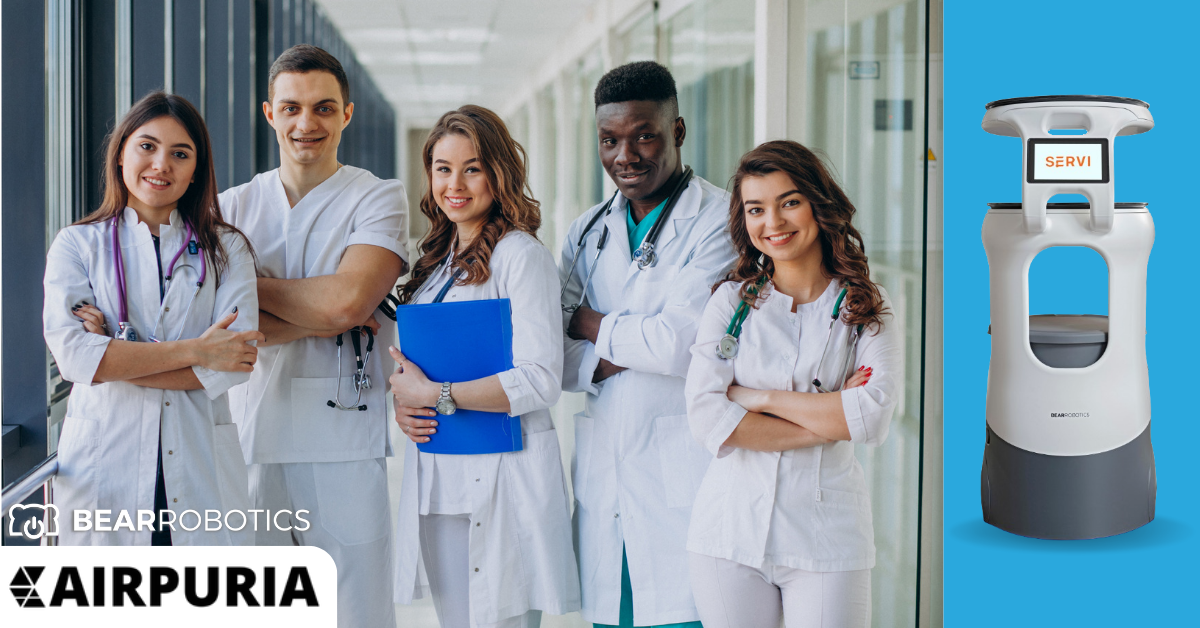
Types of Robots In Healthcare
In healthcare, three main types of robots are becoming increasingly popular: modular, service, surgical assistant robots, and autonomous mobile robots. These robots play significant roles in the health care industry, such as allowing doctors to consult with patients remotely, dispensing medications robotically, and reducing the spread of infection.
In other words, the world is changing and hospitals are happily accepting these changes. Robots are here to help make your work easier and more efficient.
The types of robots used in the health sector:
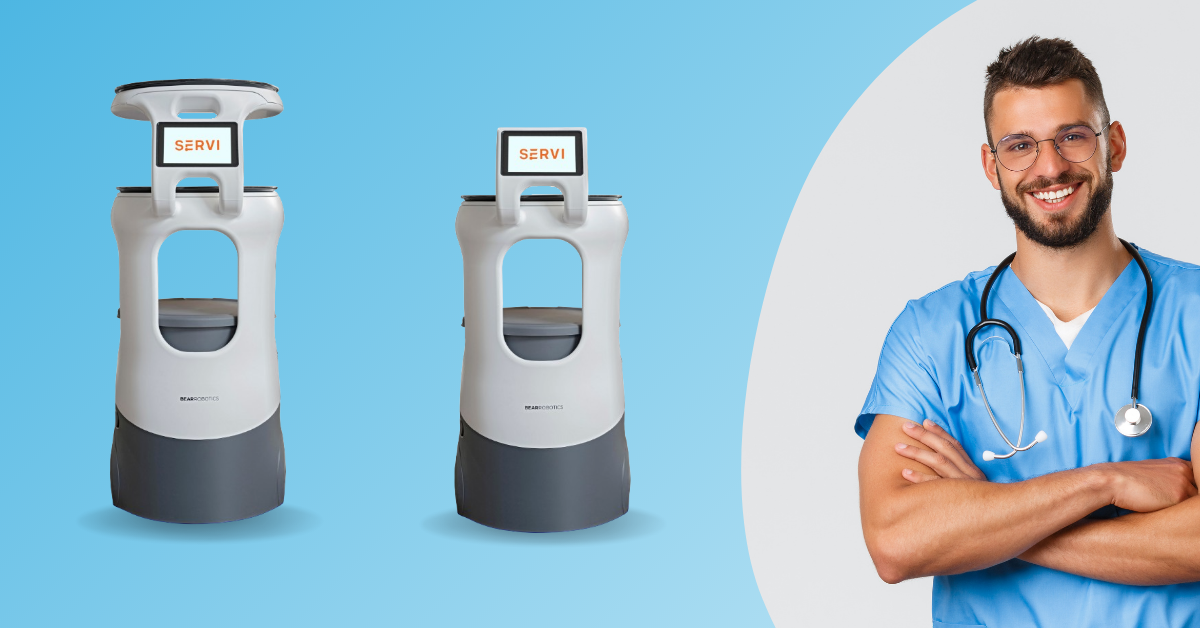
Modular Robots
Modular robots are those that can be configured to perform multiple functions. They can provide assistance and support to medical staff. Some have the capability to help transport patients and equipment around the hospital.
Patients who use therapeutic robots benefit from their rehabilitation functions — particularly after traumatic brain injuries, stroke, or paralysis.
Those with spinal injuries who cannot perform their daily tasks benefit from a wheelchair-mounted robotic arm. They have been equipped with depth cameras and artificial intelligence to help monitor patients’ forms while undertaking prescribed exercises. They function by measuring their motion at different positions and tracking their progress. So, they can interact with patients to coach and encourage them.
Surgical Assistant Robots
Surgical assistant robots can help surgeons to operate with greater precision. These robots can provide a wider range of motion than surgeons, allowing for more complicated procedures to be performed.
Surgical assistant robots are precisely used for more delicate procedures involving the brain or heart. They can be operated by surgeons who are located remotely, which can reduce surgical errors. And that allows more surgeries to be performed in a shorter time.
The operating room doesn't need to be vacant while a surgeon is present elsewhere, and expensive equipment doesn't need to be moved. Additionally, they have been designed so that they do not have any exposed sharp edges or protrusions that could potentially cause injuries during an operation, making them arguably safer and easier to use than traditional tools.
Autonomous Mobile Robots
The adoption of autonomous mobile robots (AMRs) in hospitals has increased rapidly in recent years. AMRs have been shown to assist with critical needs such as disinfection, telepresence, and delivery of medication and medical supplies. In addition, AMRs can help reduce the spread of hospital-acquired infections (HAIs), provide timely access to medical records, and improve patient satisfaction scores!
Not only do AMRs reduce labor costs, but it can also assist with increasing staff members' productivity by eliminating some low-priority tasks that would otherwise waste time if not completed quickly enough.
Service Robots
Service robots – like Servi Service Robots from bear robotics — are becoming increasingly popular in hospitals as they offer many advantages for assisting traditional staff. They can move around autonomously, which means they can be deployed to multiple locations. They can also work long hours without getting tired and be programmed to carry out specific tasks such as delivering medications.
By automating many of the mundane tasks that hospital staff would otherwise have to do themselves, service robots could free up valuable time for healthcare professionals to spend with patients. That means, better patient care and less stress on the medical staff.
These robots are giving us back the time we can use more productively elsewhere.
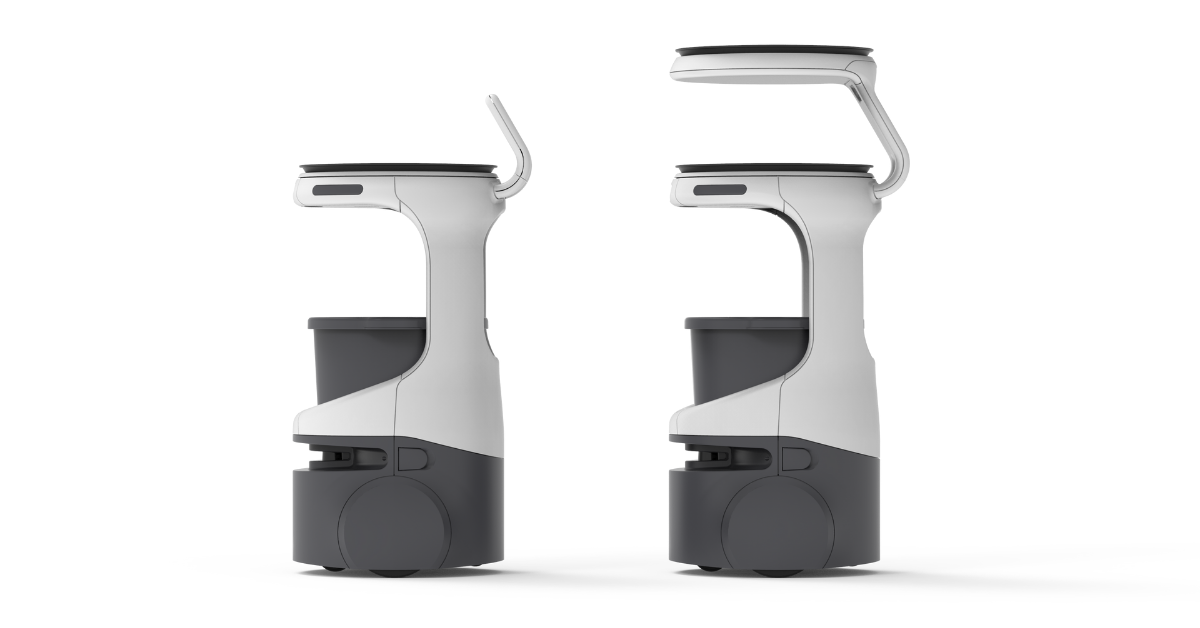
What is Servi Service Robot from Bear Robotics?
Bear robotics Servi Service Robot is a robot that brings exceptional experiences in various sectors, including the health and food service industries. The robot has helped to eliminate repetitive work for employees. They focus on an essential factor in the health industry — food delivery!
Quick Tip: After setting your "home base" in Servi's programming, patient rooms can be set, facilitating food and item delivery right to a patient's room!
This "home base" can be anything — from the nurse's station to the kitchen!
The robot is equipped with safe navigation and LiDAR camera features. These will allow Servi service robots to efficiently work through hectic hospital environments without causing a scene, halt, or spill in service. And the Auto Return mode allows the robots to report back after completing the task automatically.
Bear Robotics Does All The Heavy Lifting
You can apply for Servi robots on Airpuria's website. Our company offers you a customized range of Servi units to fit your exact needs. You may choose your desired robot and apply for lease/subscription options. Once leased, Bear Robotics will deliver Servi to your hospital AND set everything up for you. Bear Robotics will come for 2-3 days and help with:
-
Digitally mapping Servi throughout your hospital.
-
Training your staff to use Servi to its maximum capabilities.
-
Optimizing & configuring Servi to work best for meeting your hospital's goals.
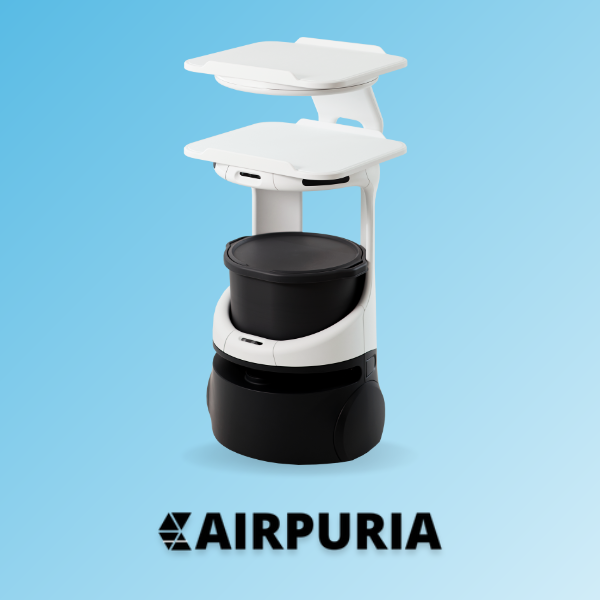
Benefits of Servi Service Robotics in Healthcare
Bear robotics Servi Service Robots are here to help in the health sector. Those who have adopted them are getting these benefits:
1. Protect Patients From Infection
Hospitals are filled with sick people, which means they’re also filled with germs. These germs can cause infections, and Servi Service robots can help protect patients from them. Since Servi minimizes the contact between staff and patients, it also minimize the transfer of germs. This helps create a cleaner environment for both the patients and the staff alike
Hospitals are increasingly using these service robots to help protect patients from infection. The robots can deliver medications and supplies to patients' rooms, reducing the need for staff to enter the room and potentially expose patients to infection. In addition, service robots can act as valuable companionship to patients who are isolated in their rooms, helping to reduce their stress and anxiety levels.
2. Care More For Patients
By automating tasks that do not require human interaction, Servi Service robots can help save important hospital time. For example, by delivering medication to patients' rooms, these robots can free up nurses' time so they can attend to more important tasks — such as caring for patients!
Servi Service robots can boost morale, as they are often seen as friendly and helpful companions by patients and staff alike.
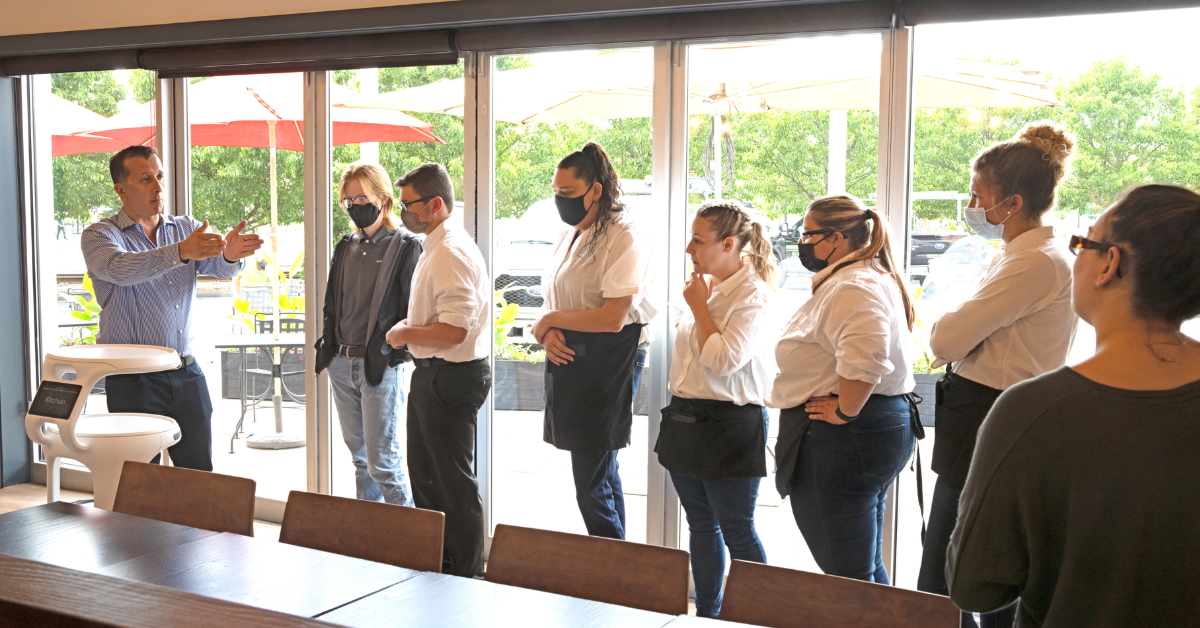
3. Promote Health Behaviors
If you work in the medical field, chances are you've seen a service robot or two in action. Whether cleaning floors or delivering supplies, these machines are slowly but surely changing the healthcare landscape. Here are ways Servi service robots are revolutionizing hospitals to promote health behaviors:
Improved quality of life
As more people face longer periods of recovery at home following surgery or injury, robotic systems can help them maintain an active lifestyle and spend more time with family and friends.
Enhanced environmental sustainability
Bear robotics Servi robots are being used to cut down on hospital waste by carrying out tasks that require minimal human interaction — such as delivering food, supplies, and other items to the patients' room and carrying supplies from the nurse station to the patients — allowing employees to focus on tasks that require more skill and attention, like caring for patients.
Improved efficiency
With so many advancements in robotics happening across industries, the medical industry is able to leverage this technology to optimize staff workflow and better distribute workloads among caregivers.
Greater security
One of the greatest advantages of Servi robots is that they aren't alive and therefore cannot carry infectious diseases or harbor as much bacteria as humans do.
4. Streamlined Clinical Workflows
Robots can take on many tedious and time-consuming tasks that nurses and doctors are currently responsible for, such as taking food and items to patients. This will free up valuable time for clinicians to focus on more important tasks.
Service Robots can serve as personal assistants to patients, helping them to stay comfortable during their hospital stay. They can transport supplies and equipment around the hospital, making it easier for staff to receive much-needed resources.
This encourages reduced demand for work but ensures a consistent process.
All these activities will help workers in the health sector focus on value-driven and patient-centric work.
Frequently Asked Questions
What is the use of Service Robots?
Service robots are increasingly used in hospitals to help with various tasks. From transport to delivery, these robots are changing the way hospitals operate. They improve safety for patients and staff by reducing the need for people to walk around hospital corridors. They free up staff time to provide better care by giving them more time off from routine tasks that a robot could do.
How will automation affect employees?
There's no doubt that automation is drastically changing the workforce. Service robots can take on more tasks and responsibilities as they become more advanced. This means hospital employees must adapt to new roles and responsibilities. They work around the clock – one of the biggest complaints about nurses and doctors is their lack of availability during off-hours. They either work night shifts or weekends.
What are the advantages of using service robots in the health industry?
Robots have been increasingly used in healthcare over the past few years, and they have many advantages. First, robots can help assist traditional employees with performing tasks such as cleaning or delivery. Second, robots can help improve patient care by providing support and assistance to nurses and doctors. Third, robots can help to reduce the spread of infection by disinfecting surfaces and equipment. Lastly, robots can help increase hospital the efficiency of operations by automating tasks.
Our Final Thoughts
There's no doubt that service robots will change the healthcare industry forever, which brings great news to modern world. Robots don't get tired or sick like humans, so they can work all day without any breaks or downtime while helping guests and customers.
Healthcare industries search to adopt service robots because they're better equipped than humans to handle hazardous materials like asbestos or lead paint without coming into contact with them. If you want to know more about how service robots will revolutionize the way we live our lives, feel free to check out Servi Service Robotics in action below !
Contact Us
Want to learn more about Servi? Give us a call here - 773.337.8822!
Or, feel free to send us an email by clicking here!
BONUS VIDEO
Want to learn more about what Servi can do? Check out this awesome video — Meet Servi!
[Embed: https://youtu.be/vS36IKhXntI]

